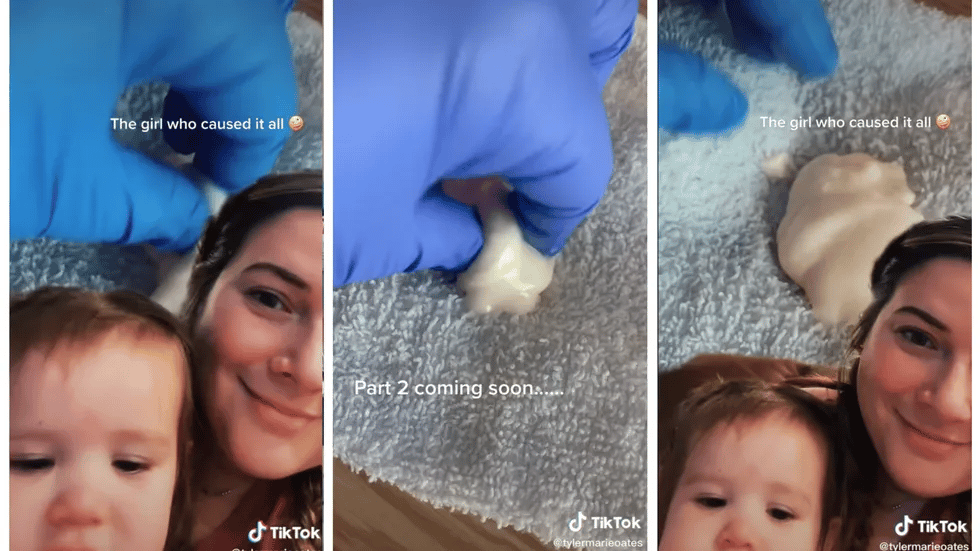What’s the best way to store breast milk? Your top questions, answered

Following the proper storage guidelines will help ensure that all that time and effort doesn't go to waste.
Table of Contents
- Here are the answers to your most-asked questions about properly storing breast milk, mama.
- How should I store breast milk in the refrigerator and freezer?
- Which breast milk storage method is best?
- How do I freeze breast milk safely?
- How do I thaw breast milk safely?
- How long can breast milk sit out at room temperature?
- How long can breast milk stay In the refrigerator or freezer?
- Why does stored breast milk smell or look odd?
- How do I know If breast milk has gone bad?
As a breastfeeding mom, you’re likely to spend hours, days, weeks or potentially months of your busy life pumping your breast milk. After all that hard work, it’s important to know how to store your expressed milk safely and effectively so that your little one gets the milk you’ve worked so hard for. Following the proper storage guidelines will help ensure that all that time and effort doesn’t go to waste.
Here are the answers to your most-asked questions about properly storing breast milk, mama.
How should I store breast milk in the refrigerator and freezer?
When storing breast milk in the refrigerator or freezer, it’s important to use a container that is specifically designed for breast milk storage. These breast milk containers are made with plastics that are safe and designed to stand up to storage conditions.
All milk storage containers should be labeled with the date the milk was pumped. This will allow you to set up a system to ensure the oldest milk gets used first.
Which breast milk storage method is best?
There isn’t one best system for breast milk storage—it really depends on what your individual pumping habits and storage needs are.
Some moms will have shorter-term storage needs. The milk they pump today will be used to feed the baby in the next day or so. For these moms, storing in bottles in the refrigerator is often the most convenient approach, especially if a caregiver is using that same bottle to feed the baby. You don’t have to worry about taking up too much space in their refrigerator or freezer with only six to 10 bottles in rotation, and you also don’t have to worry about transferring milk into freezer bags.
For moms who pump more frequently or have a larger quantity of breast milk that they want to store, breast milk storage bags in the freezer usually works best. Storage bags offer a more economical option when storing large quantities, and they take up less space in the freezer. They also help the defrost quickly when it’s time.
How do I freeze breast milk safely?
Breast milk should be put in the freezer as quickly as possible after pumping. Many moms pump at work or another place away from home—in those cases, you should cool the milk in the refrigerator or a cooler bag as soon as possible after pumping, to prevent the milk from going bad too soon. When you get home, transfer the milk to the refrigerator or freezer, depending on how long you plan to save the milk before using it.
When freezing breast milk, it should be stored in the main body of the freezer and not in the door. This helps maintain a consistent temperature and prevents thawing and refreezing during storage.
How do I thaw breast milk safely?
Breast milk can be thawed slowly in the refrigerator overnight for use the next day. If you need it quickly, the storage bags can be run under warm tap water or placed in a bowl of warm water for a few minutes. Or, you can purchase a warmer to thaw and warm breast milk.
Once the milk has been removed from the freezer, it needs to be used within 24 hours, and it cannot be re-frozen.
Never microwave breast milk—it can create hot pockets within the milk which could burn the baby’s mouth, and the microwave can damage some of the beneficial properties of the milk.
How long can breast milk sit out at room temperature?
For full-term healthy infants, breast milk should not sit out for longer than four hours at room temperature for freshly expressed breast milk, or one to two hours for thawed breast milk.
If your baby was born early, or if they have a medical condition, ask your pediatrician for specific guidance here.
How long can breast milk stay In the refrigerator or freezer?
For full-term healthy infants, the recommendation is that breast milk can stay in a regular freezer for up to six months in the freezer, or up to 12 months in a deep freezer.
Why does stored breast milk smell or look odd?
Unlike the cow’s milk that we buy from the grocery store, human milk isn’t homogenized. Homogenization is a process that cow’s milk goes through to prevent the fat and water parts of the milk from separating.
Once breast milk sits for a few minutes, you will notice that fat starts to float to the top. This is perfectly normal and safe. Stored breast milk can be gently mixed to redistribute the fats before feeding.
Stored breast milk generally doesn’t have any different odor than fresh breast milk. However, some moms may notice a soapy, metallic or other funny smell in their thawed breast milk. This is generally due to an enzyme called lipase. Lipase is a naturally occurring enzyme that helps the baby digest breast milk. When breast milk is frozen, this enzyme is activated and the thawed milk can take on a different odor.
The level of lipase in the expressed breast milk will determine how noticeable this difference is. Some moms produce more lipase, and some will notice a fluctuation throughout their pumping experience.
Even though this milk can have a funny odor, it is usually safe and can be fed to the baby. If your baby won’t take this milk, you may have to scald your breast milk prior to freezing it. This deactivates the lipase enzyme and prevents the odor from developing during storage. This can be done by placing freshly expressed breast milk into a pan and heating it until it starts to bubble around the edges. Cool the milk quickly by placing the pan in an ice bath. Once cool, transfer the milk to your desired storage container and store as usual.
How do I know If breast milk has gone bad?
If you’re following the guidelines for pumping and storage, there is little chance that your milk will go bad. However, if you do think that you have milk that has potentially gone bad, it’s better to err on the side of caution and discard it. Spoiled breast milk usually smells rancid (much in the way that spoiled cow’s milk does).
It can be tough to tell the difference between milk that’s gone bad, and milk that smells bad due to high lipase levels. Consider how well the milk has been stored to help you decide. Did you just pump the milk yesterday or it is from last week? The answer to that question may help you figure it out.
If you have a large quantity of milk that you think might be bad, reach out to a breastfeeding professional in your area for specific advice and guidance—it may be that you have a high lipase level, and they can help you figure out the best plan forward.


































